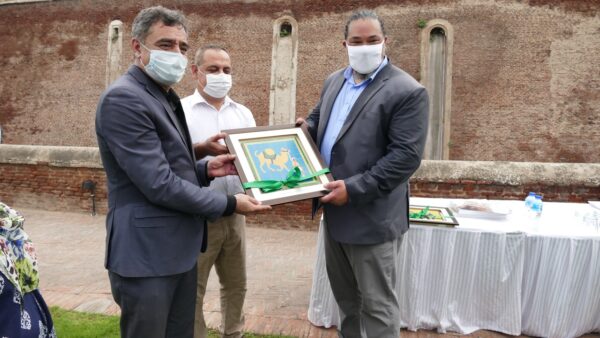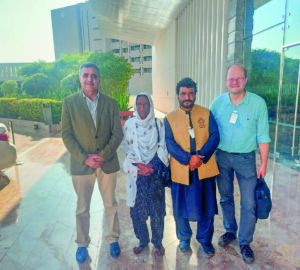As the Aga Khan Cultural Services Pakistan enters its fourth decade of operations in the country, the organization’s mission to improve the socio-economic conditions of rural and urban communities by leveraging the transformative power of cultural heritage has only strengthened with time. With numerous award-winning projects throughout Pakistan, AKCSP is now helmed by the dynamic Tausif Khawaja.

From our archives we bring you a throwback to our exchange with AKCSP regarding their various rehabilitation programmes in the high valleys of Gilgit-Baltistan.
Aga Khan Cultural Service Pakistan (AKCSP) is the Pakistan arm of the Historic Cities Support Programme (HCSP) of the Aga Khan Trust for Culture (AKTC) based in Geneva. The programme has been involved in urban regeneration projects in nine different settings in the Islamic world: Afghanistan, Bosnia-Herzogovina, Egypt, India, Mali, Pakistan, Syria, Tajikistan, Uzbekistan and Zanzibar through the restoration of historic structures, the creation and rehabilitation of public spaces, parks and gardens and support for community-based planning and upgrading projects.
Since its inception, the AKCSP’s efforts have gone a long way in the preservation of Pakistani art, culture and heritage, paving the way for future generations to both enjoy and learn from.
Apart from its extensive work in Lahore since 2007, which included the two-year restoration project focusing on the ShahiHammam, the AKCSP has also worked closely with Gilgit-Baltistan’s tourism and culture department on four projects in the area. These are: Baltit Fort (which was one of the AKCSP’s first projects in the 90s that was eventually completed in 1996, and went on to win the UNESCO Award of Excellence in 2004), the Shigar Fort, the Khaplu Palace (that received an Award of Distinction by UNESCO in 2013) and the Altit Fort (that also received praise from UNESCO in 2011 with an Award of Distinction).
“Did you know the economy of Gilgit-Baltistan runs on the AKCSP’s four projects? They have approximately 50,000 tourists on an annual basis,” says Wajahat Ali, the Manager of Design and Conservation at the AKCSP in Lahore. “This year the expected footfall is one million; there has been an enormous increase in employment in the area.”
For Ali, having been in the field for sixteen years and counting, cultural heritage can be used as a powerful development tool to address poverty and unemployment. “Take a look at Hunza,” he goes on to explain. “Thanks to travel and tourism they’re thriving.” Having been operating in Lahore since 2007, Ali reveals that the AKCSP has been heavily involved in the strategic planning of the Walled City, in addition to the conservation of landmark projects,such as the GaliSurjan Singh (a residential area located inside Delhi Gate), and the Wazir Khan Mosque, apart from others.
“Conservation is much more than the drawings,” Ali says. “We have archaeologists, chemists and microbiologists on board with us too! Also, you have to understand, in our field, time is a given – conservation is not an overnight process. Conservation must have impact, and most importantly, it must be long-lasting.”
But in a country that has never seen consistent socio-economic stability, how does one make the public aware of the importance of their heritage, and most importantly, their identity?
“People need to see one project… just one demonstrative project,” explains Ali. “Everyone, including the government needs physical proof and evidence of a project that has been refurbished – it really is the only way to make our people value their heritage.”
Having enjoyed a booming travel industry in the 60s and the 70s, it is time Pakistan reclaimed its space in the sphere of both local and foreign tourism. Besides, initiating and then cultivating a connection with one’s art, literature, and history truly does go a long way in inculcating a spirit of patriotism to one’s rich and diverse homeland.
Tausif Ahmad Khawaja, CEO, Aga Khan Cultural Service Pakistan with U.S. Consul General William Makaneole during the latter’s visit to the Lahore Fort 64





